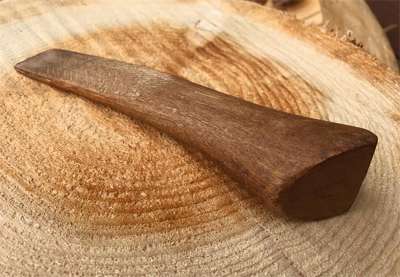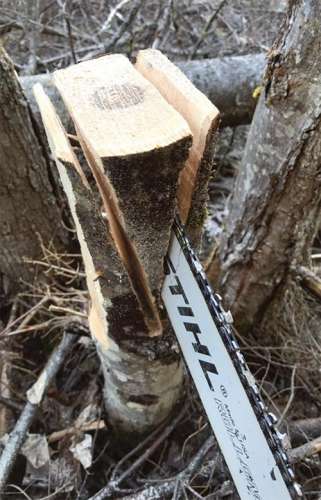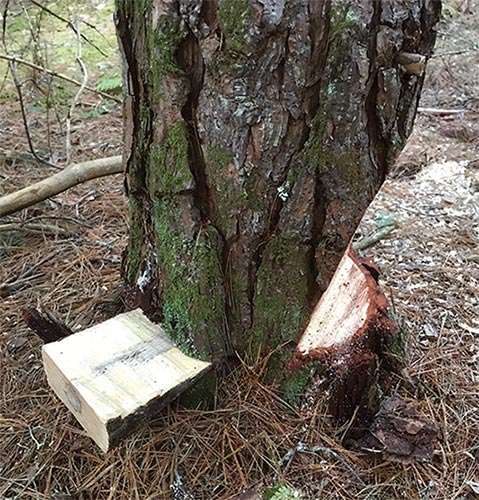Not to endorse stereotypes too much, but I’m a card-carrying cheap Scot. As I walk through the local farm and forestry supply store, my mind instantly wanders to question, “how could I make this or that for free?” Among my favorite forest freebies are homemade felling wedges.
My initial entry into wedge-making was by accident. I was cutting pulpwood in a thick stand of fir where the neighboring trees caused repeated hang-ups. I clearly needed more lift to force the trees I was cutting onto the ground, but was out of wedges. I tried cutting a wedge out of a fir stump, but the wood simply compressed as I tried to pound it home. Looking for a better answer, I went to the bed of my truck and found an old, broken axe handle. I trimmed the handle about eight inches up from the doe’s foot and shaped it with a hatchet and knife to reveal a smooth, double-tapered wedge. The hickory handle-wedge worked well, providing enough lift to coax the tree to the ground. While somewhat less durable than plastic or aluminum wedges, I find that these wooden variations work well and can simply be left in the woods once their useful life has been exhausted.
If you find yourself in the woods short on wedges and there’s no old axe handles lying around, consider ripping a wedge out of a limb or small hardwood pole. I generally look for maple, oak, or elm sources, about 4 inches in diameter. Using your chainsaw, begin by ripping two smooth sides and then make two diagonal cuts for the center wedge. This will yield three wedges, which should be enough to get your tree to the ground, unless you’ve worked yourself into a real pickle!
Another great source of free wedge material can be old oak pallet skids. Generally I make these types of wedges on a band-saw over the winter and toss a few in my tool box. Cut a variety of lengths and thicknesses to suit different felling conditions.




